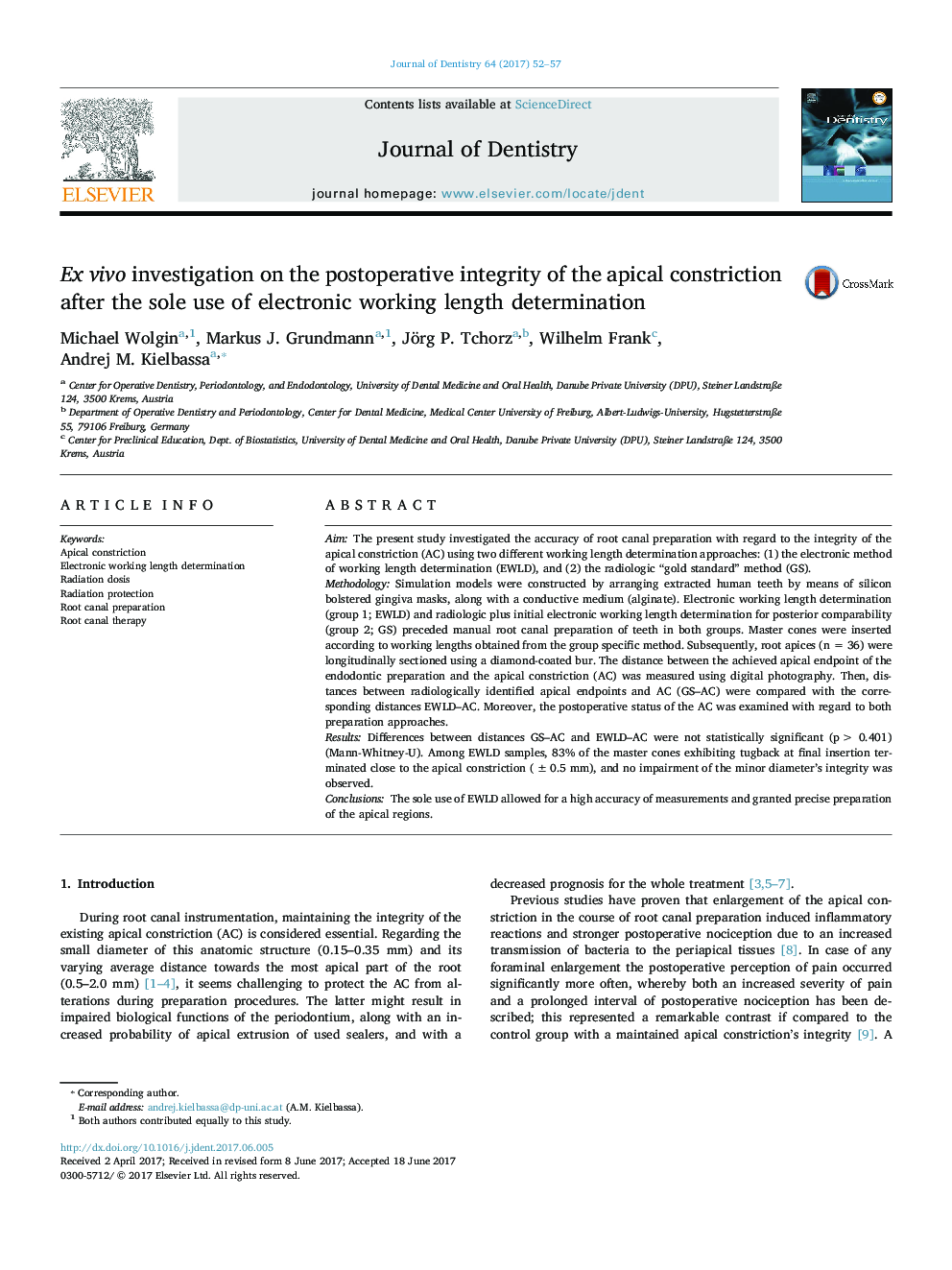| کد مقاله | کد نشریه | سال انتشار | مقاله انگلیسی | نسخه تمام متن |
|---|---|---|---|---|
| 5640531 | 1585465 | 2017 | 6 صفحه PDF | دانلود رایگان |

AimThe present study investigated the accuracy of root canal preparation with regard to the integrity of the apical constriction (AC) using two different working length determination approaches: (1) the electronic method of working length determination (EWLD), and (2) the radiologic “gold standard” method (GS).MethodologySimulation models were constructed by arranging extracted human teeth by means of silicon bolstered gingiva masks, along with a conductive medium (alginate). Electronic working length determination (group 1; EWLD) and radiologic plus initial electronic working length determination for posterior comparability (group 2; GS) preceded manual root canal preparation of teeth in both groups. Master cones were inserted according to working lengths obtained from the group specific method. Subsequently, root apices (n = 36) were longitudinally sectioned using a diamond-coated bur. The distance between the achieved apical endpoint of the endodontic preparation and the apical constriction (AC) was measured using digital photography. Then, distances between radiologically identified apical endpoints and AC (GS-AC) were compared with the corresponding distances EWLD-AC. Moreover, the postoperative status of the AC was examined with regard to both preparation approaches.ResultsDifferences between distances GS-AC and EWLD-AC were not statistically significant (p > 0.401) (Mann-Whitney-U). Among EWLD samples, 83% of the master cones exhibiting tugback at final insertion terminated close to the apical constriction (±0.5 mm), and no impairment of the minor diameter's integrity was observed.ConclusionsThe sole use of EWLD allowed for a high accuracy of measurements and granted precise preparation of the apical regions.
Journal: Journal of Dentistry - Volume 64, September 2017, Pages 52-57